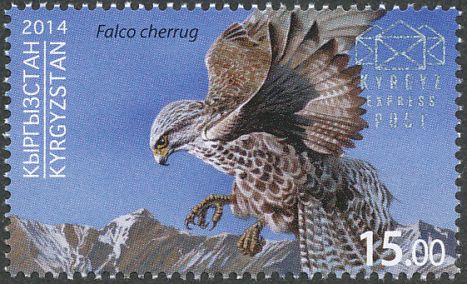Issued by Kyrgyz Express Post 2014 – 2020
Preamble Browsing through some back issues of Flight magazine, I saw a picture of one of the stamps issued by Kyrgyz Express Post (KEP) and it crossed my mind that it might be interesting to do a review of the bird stamps issued so far by this postal operator, from the date that they started to issue stamps in November 2014, through to 2020.
Who are KEP?
KEP is the second postal operator in Kyrgyzstan and run postal services alongside (and in competition with) the national legacy provider, Kyrgyzstan Post (KP). The Kyrgyz Republic’s Government granted KEP an operator’s licence initially in December 2012, which was given international endorsement in 2013 through the Universal Postal Union. KEP issued its first stamps in December 2014 and since then has produced up to ten sets each year. Many of the issues are single stamp issues; others are in sets of four, but overall, the issuing policy is relatively modest and the print runs reasonably conservative (around 10,000).
In my view, what does make these stamps attractive is a combination of the quality of the design and artwork; the quality of the printing; and that the stamps remain (traditionally) gummed, rather than self-adhesive.
KEP has already provided us with a good range of bird stamps, with the promise of more to come, now that KEP has decided to issue a bird stamp each year, assisted in this endeavour by the Kyrgyz Wildlife Conservation Society (KWCS), who select the bird to be featured. If only Royal Mail had such vision.
The Bird Stamps
2014 Fauna of Kyrgyzstan
KEP’s second stamp issue put on centre stage the Fauna of Kyrgyzstan, which included one bird stamp, featuring the Saker Falcon (Falco cherrug), in dramatic action about to pounce on its prey.
2014 Saker Falcon (Falco cherrug)




